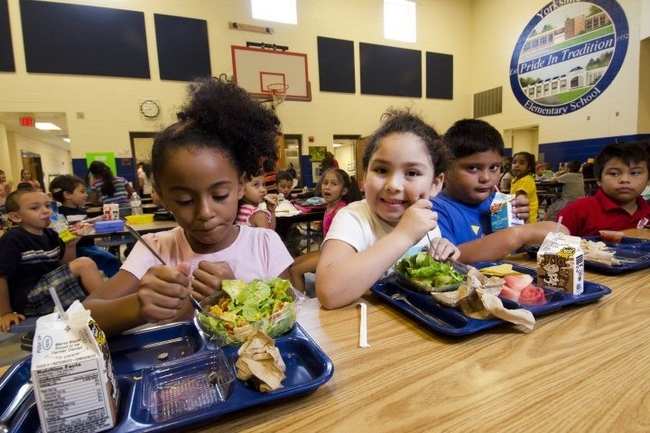Nutrition Policy Institute rolled out an online evaluation tool, EATS, for local health departments to evaluate school-based CalFresh Healthy Living during pandemic-related school closures. EATS data showed that students receiving school meals during the closures were more likely to eat fruits and vegetables, an important insight that could impact school nutrition policy in the future.
The Issue
In March 2020, schools across California shuttered in an effort to protect students and staff from COVID-19 infection. School closures impacted provision of the National School Lunch Program and School Breakfast Program, and thus, the nutrition safety net they provided. School districts across the state pivoted to centralized meal distribution via grab-and-go and drive-up, or even utilized home delivery in some cases. Despite monumental efforts to get school meals to the children who needed them most, meal participation declined significantly during this time.
The California Department of Public Health's CalFresh Healthy Living Program (CDPH-CFHL) prioritizes improving child nutrition security and diet quality. Local health departments partner with K-12 schools to implement CFHL nutrition education and policy, systems, and environmental (PSE) change strategies that aim to increase consumption of fruits and vegetables and decrease consumption of sugary drinks. Their existing relationships with school districts enabled them to support efforts to ensure that school meals met dietary standards and student needs during school closures.
How UC Delivers
During the pandemic, local health departments modified their school-based programs to continue to reach students outside of the school setting. For example, they delivered nutrition education remotely via Zoom or pre-recorded lessons, and they pivoted to PSE change strategies like modifying school meal distribution practices to help ensure students continued to have access to healthy foods.
Nutrition Policy Institute supports local health department evaluation of school-based CDPH-CFHL interventions, and without modifying the existing data collection methodology to reach students learning at home, evaluation would not have continued. Evaluators adapted their methods, including migration of the Eating and Activity Tool for Students (EATS) to an online platform. This survey measures student eating and physical activity behaviors, and during pandemic school closures, included questions about if and where students ate school breakfast and lunch. Nutrition Policy Institute prioritized school data collection during this extraordinary period, understanding that analysis of these data could draw attention to the impacts of COVID-19 on California's youth, in particular, those already facing nutrition disparities.
The Impact
During the 2020-21 school year, as a result of Nutrition Policy Institute's development and coordination of the online EATS tool, local health departments were able to collect data from 3,297 4th and 5th grade students from 67 CFHL-eligible schools (where at least half of students are eligible for free or reduced-price meals). About half of students were female (52%) and half identified as Latino (50%). Most students were attending school exclusively by distance learning at the time of the survey (83%). Approximately one quarter of students had eaten at least one school meal the previous day (27%), with about 1 in 7 reporting they ate both breakfast and lunch (15%).
We found that students who ate one or two school meals a day had significantly higher intakes of vegetables, whole fruits, and 100% fruit juice, compared to students who did not eat school meals. Specifically, students who ate one school meal a day ate more beans and orange vegetables, while those who ate two school meals a day consumed a wider variety of vegetables, including beans and orange vegetables. However, children who ate one school meal a day drank more fruit drinks (non-100% juice) and flavored milks than those who did not eat school meals. Further, students who ate two school meals consumed more fruit drinks, flavored milks, and sports and energy drinks than those who did not eat school meals.
Our findings suggest that school meals continued to be an important source of fruits and vegetables for school-aged children during the pandemic. This highlights the importance of focusing PSE efforts on improving school meal distribution and overall quality, should students' in-person attendance be challenged again. Despite this, findings also underscore the need to reduce consumption of sugary drinks, which are a primary source of added sugars and nutrient poor energy in children's diets. This highlights an opportunity to strengthen school-based CFHL interventions by incorporating nutrition education and PSE strategies that focus specifically on healthy beverage consumption. Nutrition Policy Institute's leadership of CDPH-CFHL local program evaluation not only highlights the successes of CFHL, but just as important, the areas for program improvement. Nutrition Policy Institute's commitment to strengthening CDPH-CFHL interventions in California schools is a hallmark of UC ANR's public value of promoting healthy people and healthy communities.
This study was conducted as part of a contract with the California Department of Public Health with funding from the United States Department of Agriculture (USDA) Supplemental Nutrition Assistance Program-- SNAP. These institutions are equal opportunity providers and employers.
